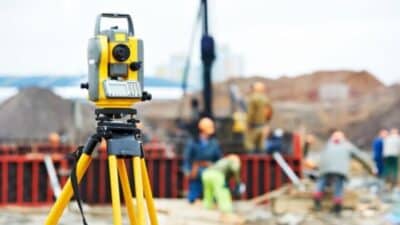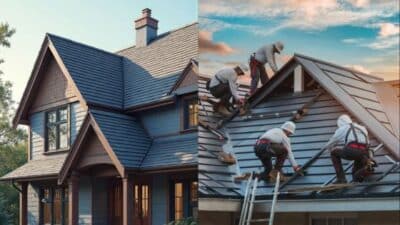
Commercial roofing design requires careful planning to ensure longevity, safety, and compliance with industry standards. Each decision impacts both the performance and overall cost efficiency of the building. A strong foundation in design principles helps contractors and building owners avoid problems that can arise later.
Material Selection and Durability
Choosing the right material forms the backbone of any successful roofing project. Options range from single-ply membranes to built-up roofing systems, each with its advantages. Climate plays a major role in determining which option will provide the longest lifespan and best energy efficiency. The durability of the chosen material directly influences maintenance needs and long-term costs. Building owners should work closely with contractors to evaluate performance ratings, warranties, and real-world use cases. A system designed for high resistance to wind, water, and UV exposure ensures reliability in diverse conditions. Contractors should also assess environmental impact and recyclability when choosing systems. Green certifications can add value and improve the marketability of commercial spaces.

Structural Load and Building Requirements
Every roof must be designed to support expected loads without compromising safety. This includes the weight of materials, HVAC units, and occasional snow or water accumulation. Engineers calculate load-bearing capacity based on building codes and project specifications. In some cases, extra reinforcements may be needed to prevent sagging or premature wear. Early consideration of load requirements reduces the risks of costly modifications later. Contractors must also verify compatibility between the chosen roofing system and the structure’s design. This balance ensures functionality without straining the building’s core framework. Planning must also include seasonal variations that influence load demands. In regions with heavy rainfall or very cold winters, extra precautions ensure the roof remains structurally sound.
Insulation and Energy Performance

Insulation is a critical component in controlling heating and cooling expenses. The correct insulation improves thermal resistance and helps maintain comfortable interior conditions. Energy-efficient roofing systems often qualify for tax benefits or other incentives, making them attractive to businesses. Reflective coatings can reduce heat absorption and extend material lifespan. The type and thickness of insulation depend on both local climate and building use. By enhancing thermal regulation, roofing becomes a tool for lowering utility bills and supporting sustainability goals. Effective insulation also reduces strain on HVAC systems, extending equipment lifespan. By regulating temperature more consistently, businesses can create a stable environment for both employees and sensitive equipment. Investment in high-quality insulation pays off through reduced operating expenses and improved working conditions.
Roofing for Industrial Settings
The needs of warehouses, factories, and large facilities differ from those of smaller structures. Effective design must handle wide spans, heavy equipment, and frequent foot traffic. Contractors who specialize in roofing for industrial buildings often recommend reinforced systems that can tolerate extreme demands. It is crucial to evaluate options to balance strength with affordability. Planning with the right materials ensures reliable performance across high-use areas. In these settings, durability and resistance to environmental stress are non-negotiable features. A well-designed system reduces risks of downtime and protects valuable operations from unexpected failures. Ventilation is another priority in industrial settings. Properly integrated systems prevent heat buildup and improve air quality. Roof designs often incorporate skylights or translucent panels to enhance natural lighting, reducing energy consumption during daylight hours.

Drainage and Moisture Control
Water management is one of the most important considerations in roofing design. Poor drainage leads to leaks, mold, and structural deterioration. Flat or low-slope roofs often require specialized solutions to ensure proper water flow. Scuppers, gutters, and internal drains must be placed strategically to eliminate pooling. Moisture barriers provide extra protection against infiltration. Addressing these factors during the design stage prevents extensive repairs and preserves the roof’s service life. Routine inspections are necessary to ensure drainage systems continue functioning effectively. Advanced waterproof membranes add another layer of defense. These products are designed to resist punctures and chemical exposure, making them suitable for demanding environments. A drainage system that integrates seamlessly with landscaping or onsite water collection provides both functional and sustainable benefits.
Safety, Compliance, and Accessibility
Commercial roofs must meet strict safety codes and regulations. Design decisions should account for fire ratings, wind uplift resistance, and regional building standards. Accessibility for maintenance personnel is equally important. Walkways, guardrails, and safe access points should be included in the planning phase. This improves efficiency and reduces hazards for workers conducting inspections or repairs. Compliance with legal requirements protects owners from liability and ensures long-term building certification. Proactive safety planning demonstrates commitment to both workers and building occupants. Staff training who access the roof is an additional factor in safety planning. Clear signage, marked paths, and periodic inspections reinforce safe practices. Incorporating these measures from the start builds a culture of safety and ensures compliance is maintained throughout the roof’s service life.

Commercial roofing design brings together structural integrity, energy efficiency, and long-term durability. By addressing materials, loads, insulation, drainage, and safety, building owners create systems that perform reliably. Careful planning in each of these areas minimizes risks, lowers costs, and supports long-lasting building performance.
- 0shares
- Facebook0
- Pinterest0
- Twitter0



